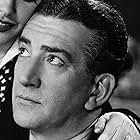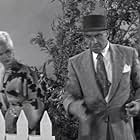This film moves swiftly in that wonderfully fast-paced,1930s no-holds- barred Warner Bros. manner. The storyline is based on the Lucky Luciano vice lord expose of the previous season, which would have been familiar to most film-goers. Warner Bros.melodramas thrived on the kind of gritty, working class stories that were "ripped from the headlines" during the Depression years. Until the Production Code clamp-down of 1934, the girls in the film would have been shown as more clearly identifiable prostitutes. Here it's all thinly veiled. Just what IS a "clip-joint hostess," one wonders. They obviously perform other business in the upstairs rooms. But the movie never goes there. The women are shown to be strong, independent, yet exploited. Though they are bordello babes, the audience sympathy is for them. The film was made the same year as "Stage Door," and it's got some similarities. These young ladies of the evening seem like they're staying in a sorority house for hookers.
For Bogart fans, this is a rather stilted, seemingly out-of-character performance for him. It's like watching Bogie's clone--the role doesn't quite seem to fit him.
This film also shows wonderful examples of the Art Deco style in the Club Intime nightclub sequences. The design is lustrous. Hollywood Deco always signified glamor, modernity, and sexual liberation.
Bette Davis insisted her make-up following the beating and slashing look horrific. If Joan Crawford had played this role, she might have sported a slight bruise. Here Davis is heavily bandaged--realistic and frightening.
This is an overblown melodrama but it shows Warner Bros. and Bette Davis doing what they did best--telling a fast-paced story with lots of scintillating, snappy dialogue. Jack Warner may not have been much different than Lucky Luciano in many ways, but his studio sure could churn out some gripping tales.









































